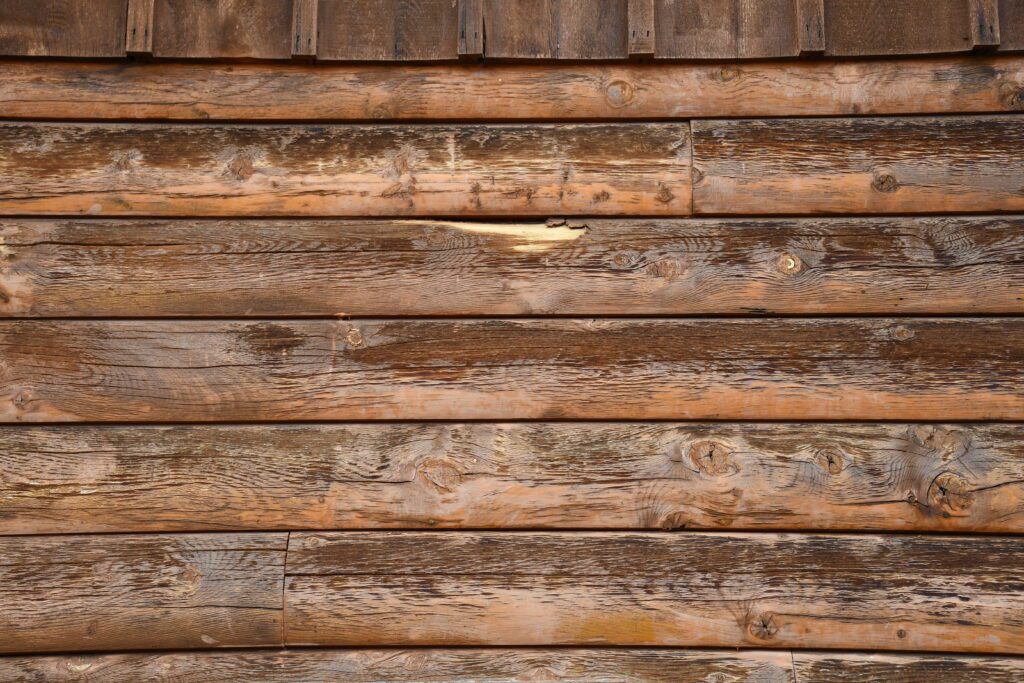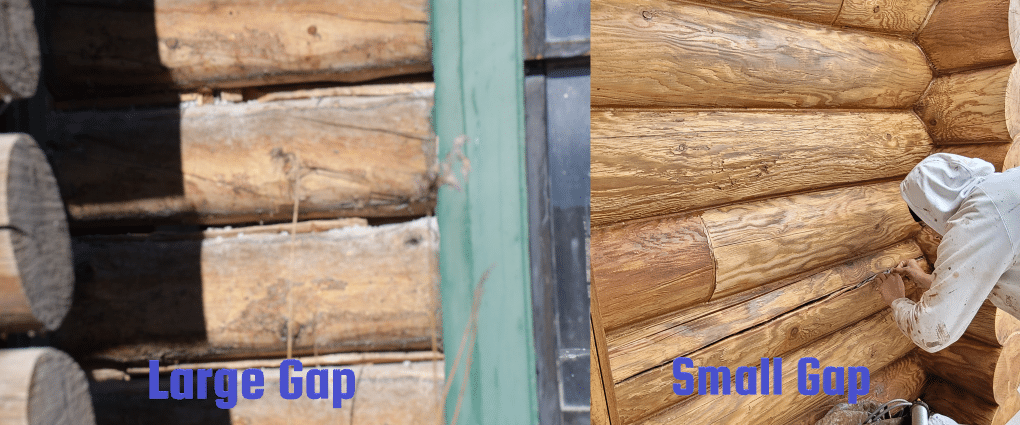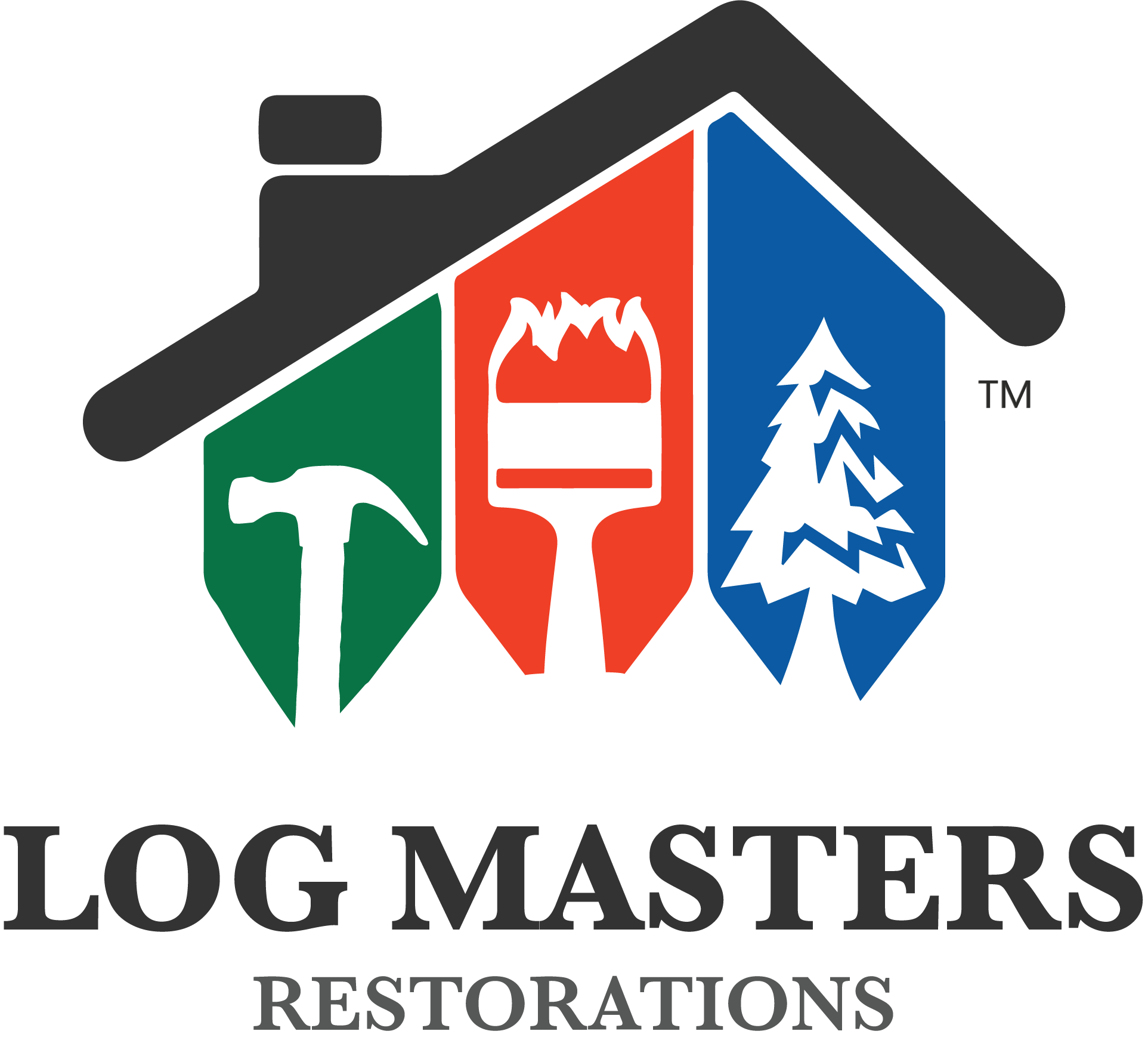Restoring a log cabin requires more than effort; it demands experience and precision. Without proper methods, minor issues can escalate rapidly. We’ve worked on numerous cabins and have seen how common mistakes can lead to serious problems. In this guide, we share what to avoid during log cabin restoration. Discover how to preserve your home’s charm, structure, and long-term value.

This is what happens when shortcuts are taken—rather than removing and replacing the rotted log, a handyman applied a new face over the damage using caulk. Hidden rot like this can lead to major structural issues if not properly restored.
Common Log Cabin Restoration Mistakes
Restoring a log cabin takes careful planning and attention to detail. Even small mistakes can lead to bigger, costly repairs later. From using the wrong products to skipping preparatory work, these issues often reduce the longevity of your home. We’ve seen how avoidable missteps can impact the quality and durability of a restoration. We will highlight the most common mistakes and guide how to prevent them.
1. Neglecting Regular Cleaning and Maintenance
Regularly cleaning and maintaining your log home can prevent early wear, moisture damage, and insect infestations. Dirt and debris trap moisture against the wood, causing rot and decay that threaten the integrity of your home’s structure.
This conflict is one of the most common issues homeowners face, often overlooked until serious problems develop. A lack of routine upkeep shortens the lifespan of finishes and exposes your logs to long-term damage.
Expert Recommendation:
Maintain a seasonal schedule to protect your investment.
- Spring: Clean exterior logs using a log-safe cleaner and soft brush to remove grime and mildew
- Summer: Inspect for UV damage, fading stain, and insect activity around windows and corners
- Fall: Clear gutters, remove debris, and ensure water drains away from the foundation; clean exterior of log home before snow falls to remove dust, leaves, and other debris so you can avoid insect infestations over the winter months
- Winter: Check chinking and caulking for gaps, reseal air leaks, and monitor indoor humidity; address any gaps during warmer days (40 degrees or above)
Consistent upkeep keeps your log home structurally sound and visually appealing for decades.
2. Ignoring Pest Control Measures
Pest damage in log homes often goes unnoticed until it becomes costly to repair. Due to the exposed wood, insects like termites and beetles target log homes. These pests quietly weaken structures, making prevention essential to avoid major restoration. This common issue can be frustrating because signs of infestation often appear late.
Without early detection, wood-destroying insects can compromise entire sections of your home. Restoring a home with extensive pest damage is not only expensive, but it requires specialized crews with extensive structural engineering knowledge.
Expert Recommendation:
Protect your home with proactive steps:
- Schedule annual pest inspections focused on log-specific threats
- Apply borate-based preservatives every three to five years for added defense
- Install flashing or barriers where wood touches the ground or foundation
- Store your firewood and mulch at least 20 feet from your home
Consistent pest control reduces damage risks and helps preserve the strength of your log home for years to come.
3. Failing to Seal and Stain the Logs Properly
Many log homes suffer from weather-related wear due to poor sealing and staining. This feature protects against moisture, UV rays, and temperature shifts. When done incorrectly—or not at all—it exposes the logs to early aging and decay.

This conflict is a common mistake because some homeowners underestimate the rate at which sun, rain, and humidity break down untreated wood. Without a proper barrier, logs absorb moisture, which can lead to cracking, warping, and rot.
Expert Recommendation:
Take a proactive approach with the right materials and schedule:
- Use breathable log home stains explicitly made for log homes
- Apply the manufacturer’s recommended number of coats
- Reapply every 3–5 years, or sooner if water stops beading
- Inspect sun-facing walls yearly and touch up where needed
Proper staining helps preserve your log home’s beauty and durability over time.
4. Using Incorrect or Incompatible Products
Many log homeowners unknowingly use products not designed for logs. These can trap moisture and cause premature decay. General-purpose cleaners, paints, or sealants often lack the flexibility and breathability that log surfaces need to stay healthy.
This issue is common because store-bought products promise convenience but often fail to protect log structures in the long term. Incompatible materials can block vapor release, leading to hidden moisture damage beneath the surface.
Expert Recommendation:
Avoid generic options and choose log-specific materials every time:
- Use cleaners, stains, and sealants engineered for log homes
- Always test products on a small section first to check for compatibility
- Ensure all components—cleaners, preservatives, and stains—work well together
- For added protection, pick stains with strong UV resistance and breathable formulas
Using the right products keeps your log home safe, beautiful, and structurally sound for years.
5. Improper Sealing of Log Gaps
Sealants fill in the spaces between logs, keeping water, air, and insects out. When misapplied, it fails to perform. Common issues include using the wrong materials, skipping preparation steps, or applying a layer that is too thin.

In some cases, failing to follow the two-point adhesion rule also causes sealant failure. Two points (top of the log surface and the lower log surface) allows the center to stretch. If the adhesion is three points (the two points plus adhered to the backer rod or wood surface gap (in the groove) it will make it hard to stretch as the center of the sealant is thicker than the edges, meaning the edges will stretch first and pull away from the log surface, leaving a gap for water intrusion.
Gaps in chinking or caulking allow moisture to seep into the logs, leading to decay and energy inefficiency. These mistakes often result from underestimating the extent to which logs shift due to seasonal changes.
Expert Recommendation:
- Use elastomeric chinking made for log homes
- Clean and dry all surfaces before application
- Remove any signs of log rot, taking the surfaces down to either bare or stained wood
- Apply the correct depth—usually between 1/4″ and 1/2″
- Add backer rods or grip strips to support the sealant in wider joints
Proper sealing helps your log home stay weather-tight, energy-efficient, and protected year-round.
6. Overlooking Structural Issues and Rot
Log homes are susceptible to hidden decay, which often remains undetected until it compromises the structure’s stability. Humid environments, especially when logs retain excessive moisture, increase the risk of fungal growth.
This damage typically occurs in poorly ventilated areas, where moisture lingers for extended periods or sun doesn’t naturally dry the wood. Ignoring early signs of rot can lead to costly repairs and compromised safety.
Expert Recommendation:
- Regularly use a moisture meter, especially in areas near ground contact
- Check for soft spots to detect decay
- Focus on splash zones, roof intersections, and shaded areas
- Schedule professional inspections every 2-3 years for early detection
Routine checks and timely interventions can prevent hidden rot from causing long-term damage to your log home.
7. Delaying Necessary Repairs
Addressing log cabin issues is crucial. Delaying repairs allows problems to worsen, often leading to higher costs. Topics such as water infiltration, insect damage, and deteriorating materials can spread rapidly, making early intervention crucial. Small leaks, if ignored, can lead to significant structural damage over time.
Expert Recommendation:
- Address water leaks immediately to prevent extensive damage
- Repair damaged chinking or caulking within 30 days
- Treat the insect infestations at the first sign of activity
- Plan for regular maintenance to avoid expensive repairs later
Making log home repairs early prevents further damage and ensures the long-term health of your log home.
8. Trying to DIY Without Sufficient Skills or Knowledge
Log home restoration requires specialized knowledge. While DIY work is tempting, improper techniques can lead to long-term damage. Each wood species, such as pine, cedar, oak, or cypress, requires different care and treatments. Misunderstanding these unique characteristics can result in ineffective restoration efforts.
Expert Recommendation:
- Start with manageable tasks like routine cleaning and minor inspections
- Attend log home maintenance workshops for hands-on learning
- Hire professionals for specialized tasks like media blasting or log replacement
- Build a relationship with a log home expert for ongoing advice
Proper guidance and professional help ensure that restoration efforts are effective and long-lasting.
Restore Your Log Home the Right Way: The Log Masters Approach
At Log Masters Restorations, we specialize in log home restoration tailored to the unique demands of the Southeastern climate. Our method combines tried-and-true techniques with cutting-edge technology, ensuring the best care for your home. We begin every project with a thorough inspection to identify both obvious and hidden issues, ranging from moisture damage to structural concerns. Using advanced tools like infrared moisture meters, we identify problems that often go unnoticed by others.
Our media blasting process, tailored to your specific wood type, removes old finishes and surface damage, revealing the actual condition of your logs. This step prepares the surface for treatments that will protect and preserve your log home for years. Let us help restore your log home with expert precision. Reach out to us today to start the restoration process!
